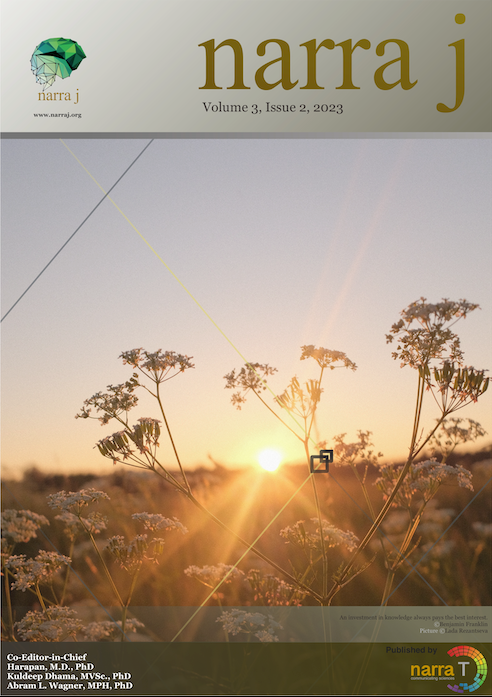Assessing hospital disaster preparedness: A scoping review of available tools
DOI:
https://doi.org/10.52225/narra.v3i2.210Keywords:
Safe hospital, instrument, assessment, good health, well-beingAbstract
One of the problems faced after a disaster is health service for victims and hospitals play a critical role in handling disaster victims. Therefore, hospitals must enhance their preparedness and establish a disaster-safe environment to effectively fulfill their role as a provider of health services during a crisis. The aim of this scoping review was to identify hospital disaster preparedness tools used around the globe and to identify the critical aspects that need to be included in hospital disaster preparedness. This study used the five stages of Arksey and O'Malley's scoping review framework to determine what disaster preparedness tools can be used in a hospital setting. The electronic literature searches of English articles published between 2018 and 2023 were conducted using PubMed, Elsevier, ProQuest, ISI Web Science, and Google Scholar databases. The searched keywords were combined into several search terms such as sub-discipline, subtitle, year, language, and content type. The keywords of sub-title searching were “preparedness”, “hospital” and “disaster”. After applying some inclusion criteria, ten articles out of 1,221 identified records were included in the final analysis. The World Health Organization (WHO) Hospital Safety Index, WHO Hospital Emergency Checklist or their modified versions, and modified Public Health Emergency Preparedness were tools used in assessing hospital disaster preparedness. These tools evaluate some aspects such as structural safety, non-structural safety, and functional capacity. The studies indicated that each tool used to measure hospital disaster preparedness has strengths and weaknesses in each assessed aspect. Although some tools have been recommended to assess hospital disaster preparedness, assessing each tool validity and reliability are critical and needs to be conducted.
Downloads
Downloads
How to Cite
Issue
Section
Citations
License
Copyright (c) 2023 Brury A. Husaini, Sugiarto Sugiarto, Safrizal Rahman, Rina S. Oktari

This work is licensed under a Creative Commons Attribution-NonCommercial 4.0 International License.



